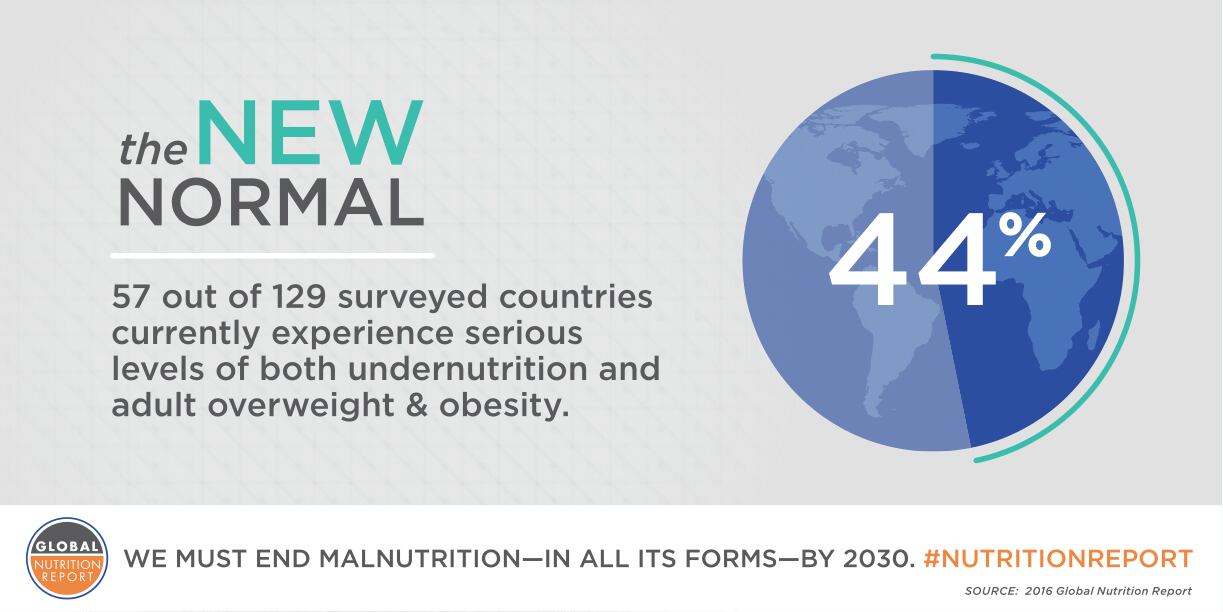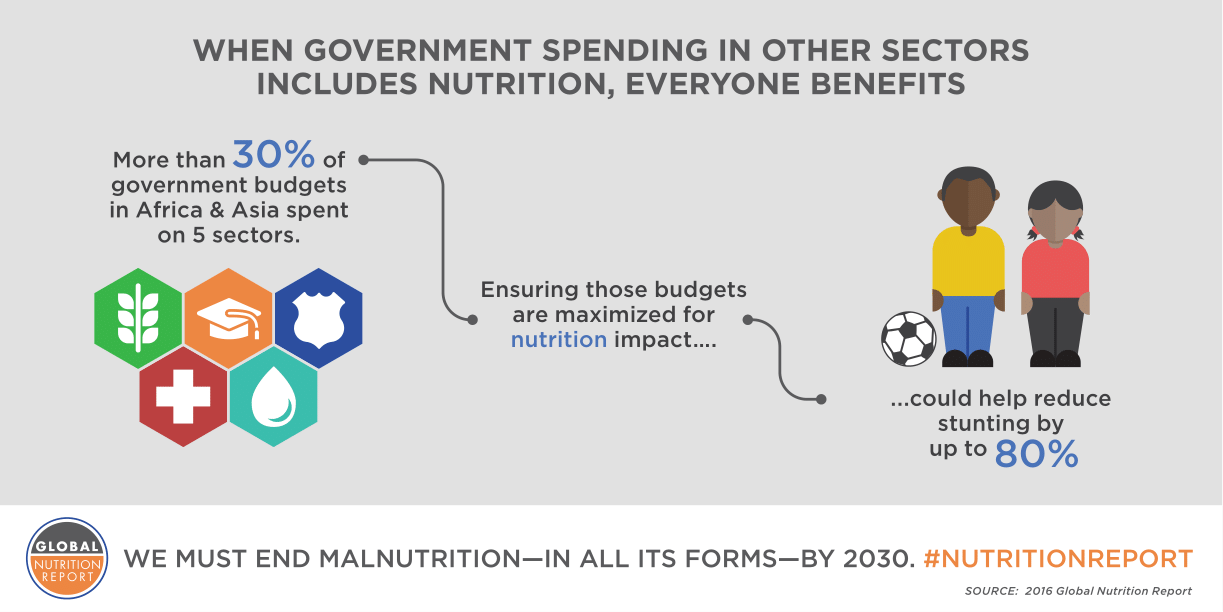According to the 2016 Global Nutrition Report, 44% of countries were experiencing ‘very serious levels’ of undernutrition and obesity.
Despite good progress being made in some countries, the report’s authors warned that the world was off track in its efforts to reduce and reverse this trend.
The research cited slow progress in some countries in reducing anaemia in women and children and preventing further increases in diabetes cases, which were placing a massive strain on fragile healthcare systems.
Malnutrition is responsible for nearly half of all deaths of children under age 5, and, together with poor diets, is the number one driver of the global burden of disease.
Malnutrition has expanded to include the overweight and obese. Those who carry too much weight or whose blood contains too much sugar, salt, fat or cholesterol, can be considered malnourished and it means more than two billion of the world's population are malnourished in some way.
The main micronutrients that individuals were considered deficient in were iron, folic acid, vitamin A, zinc, and iodine.
“Progress on scaling up interventions to reduce undernutrition worldwide has been slow and inequitable,” the report highlighted, pointing out that nutrition interventions were seen as ‘nonessential’ when compared to other prenatal services.
Those health systems that were already delivering iron, folic acid or calcium supplements needed to do more to reduce child mortality, 45% of which was due to child undernutrition.
Biofortification was one change identified that could be made in food systems to achieve dietary goals.
By 2016, an estimated 15 million people were growing and eating biofortified foods (iron beans and pearl millet; zinc rice and wheat; and vitamin A sweet potatoes, cassava, and maize) in eight target countries.
“Reaching 1 billion will involve repeating in another 25–30 countries with a particular focus on the populous countries of Asia—and so also a focus on rice and wheat.”
The report suggested that food subsidy policies could give preference to biofortified food staples. With iron and zinc crops, one strategy could transfer the high iron and zinc crop traits onto the highest-productivity, most climate-smart varieties available to farmers.
Malnourished the ‘new normal’

“One in three people suffer from some form of malnutrition,” said Lawrence Haddad, co-chair of the Global Nutrition Report’s Independent Expert Group and senior research fellow at the International Food Policy Research Institute.
“We now live in a world where being malnourished is the new normal. It is a world that we must all claim as totally unacceptable.”
Despite the grim findings, the report highlighted efforts being made in countries such as Ghana, where stunting rates have almost halved (from 36% to 19%) in just 11 years.
Peru and Malawi are close to meeting global targets on breastfeeding and anaemia reduction.
'We must stem the tide.'
However, one of the report’s authors recognised that much more needed to be done, calling on governments to act quickly and decisively.
“We’re far from done addressing undernutrition,” said professor Corinna Hawkes, co-chair of the Global Nutrition Report’s Independent Expert Group and director of the Centre for Food Policy, City University London
“But governments and donors now also have to cope with the threat that nutrition-related noncommunicable diseases and obesity pose to improving global health and development. We must stem the tide.”
While some countries are beginning to increase their budget allocations to nutrition, the gap remains significant. The report identified a $70 bn (€62 bn) shortfall globally to meet 2025 milestones for stunting, severe acute malnutrition, breastfeeding and anaemia.
“The key ingredient to all of these success stories is political commitment,” said Haddad. “Where leaders in government, civil society, academia and business are committed – and willing to be held accountable – anything is possible.
“Despite the challenges, malnutrition is not inevitable—ultimately it is a political choice: one which we need leaders across the world to make.”
Worldwide effort

Over the past decade, efforts to alleviate the burden of nutrition have been making steady gains. In 2012 the World Health Assembly adopted the 2025 Global Targets for Maternal, Infant and Young Child Nutrition.
With actions affirmed at the Second International Conference on Nutrition (ICN2) in Rome in 2014, and with the recent naming of 2016–2025 as the United Nations Decade of Action on Nutrition, the importance of addressing malnutrition is gaining momentum.
In 2015 the UN Sustainable Development Goals committed to ‘ending all forms of malnutrition,’ challenging the world to end malnutrition for all people, by 2030.
